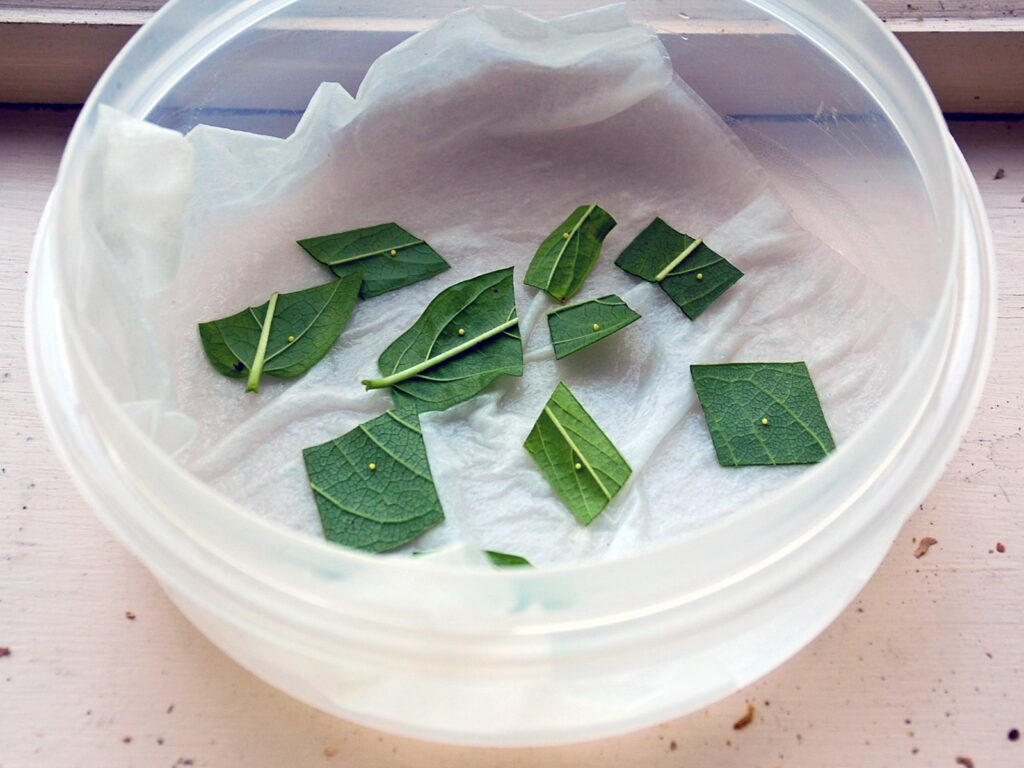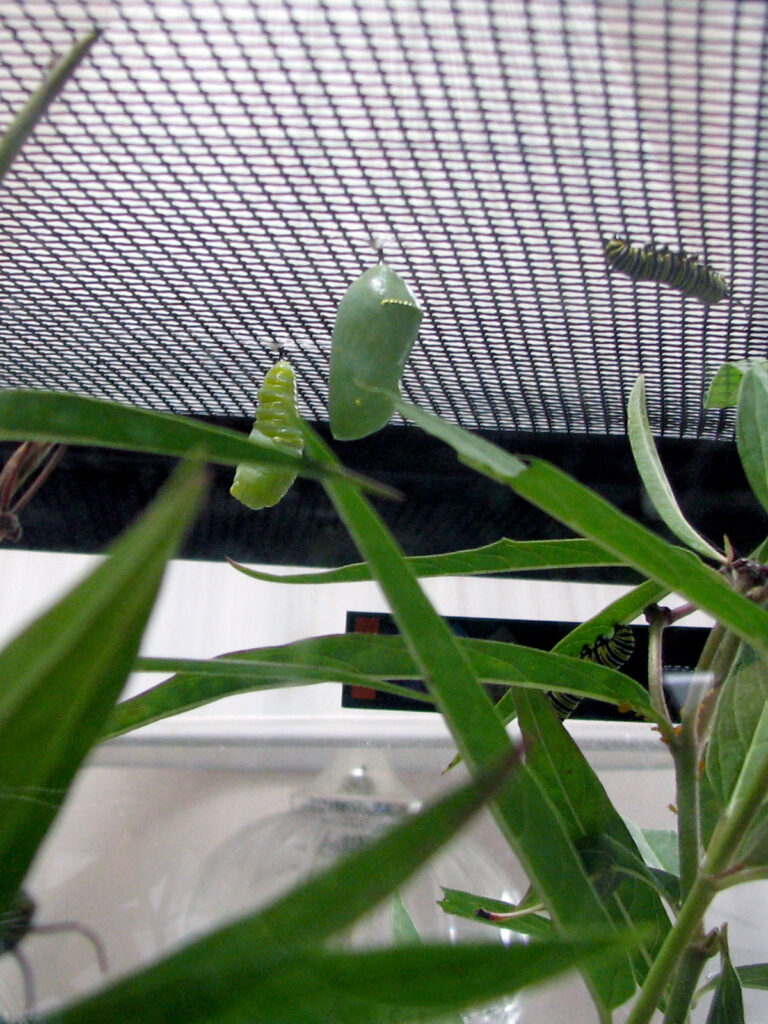I’ve seen estimates that only 5-10% of the eggs laid survive to adult butterfly-hood. Parasitism, predation, weather, even milkweed latex all take their toll. Of course, low survival rates are common with insects. We’d be overrun with insects if every insect egg laid actually survived to adulthood.

Knowing that so many caterpillars met an untimely end, many years ago, I started collecting monarch eggs to raise inside.

Nearly all of the eggs I raised successfully became butterflies.
It has been a fascinating and educational experience.
BUT now I’m doubting that this is a good practice for monarch conservation.
Is this a good practice?
First, I want to stress that I have NOT been breeding them (i.e. collecting eggs from a captive mating pair) NOR have I bought them online. I’ve collected only eggs found in my own yard or sometimes rescued from milkweeds that will be sprayed next to our local shopping center’s parking lot.
Since 2018, research indicates that captive-bred monarchs seem to have a lower survival rate than wild monarchs, that they may spread disease and perhaps not develop the ability to migrate.
So since then, I’ve been raising just a few each year from eggs rescued from non-optimal situations (such as along the grocery store parking lot or near the road). And instead of raising them in my family room, I’m raising them on our screen porch with fresh air, natural temperature variations, and nighttime darkness (as much as possible in a suburban area). It’s so hard to see an egg or little caterpillar in my yard and leave it to face the dangers of nature, but I realize there’s no point raising them to adulthood if their generation isn’t able to complete the species life cycle and migrate to Mexico!
BOTTOM LINE: This is a wonderful educational and inspirational activity, and it may be worth risking a few monarchs to educate people — especially children — about this amazing creature and inspire them to protect them — as well as less charismatic ones.
BUT it’s NOT a solution to the decline of monarchs and may even be contributing to the decline of the population.
The SOLUTION is MORE milkweeds, MORE native nectar plants, and FEWER (or preferably NO) pesticides.
The big picture
Virtually all the problems monarchs are encountering are new and human-caused: loss of habitat in general, especially on the journey to Mexico, loss of milkweed specifically, climate change, as well as illegal logging and general turmoil in Mexico’s overwintering areas.
Although I may (or may not!) have saved some individual monarchs by raising them from eggs, the ultimate solution is not raising them, but creating habitat in our yards and in the wild: in other words, planting milkweeds in their breeding territory, nectar plants all along their migration route, and preserving their winter habitat in Mexico.
Resources
- The Xerces Society:
- Keep monarchs wild: Why captive rearing isn’t the way to help monarchs
- Joint statement regarding captive breeding and releasing of monarchs – recommends against large-scale captive rearing of monarchs for release into the wild
- Monarch Joint Venture:
- Project Monarch Health:
- Monarch Parasites – preventing infection
- Yale Environment 360:
CAUTION: Indoor air fresheners and pesticides used on pets dangerous to monarchs (Note from Scientific American: Not safe for humans, either!)
Reflections
The Xerces Society has published a joint statement signed by 10 top monarch biologists warning against the captive rearing and releasing of monarchs by backyard and commercial breeders. Such activities, they wrote, “promote crowding and disease spread.” “One thing Covid-19 taught us is that social distancing can help reduce the spread of infectious disease,” notes de Roode. “The same holds true for monarchs and the OE parasite.”
~ Janet Marinelli, Rethinking Monarchs
